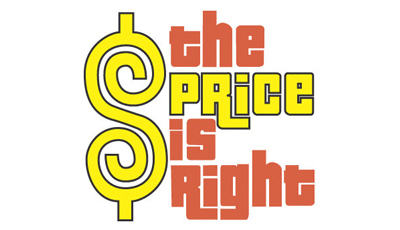
I’d like to tell you a little story about Sam, an old acquaintance of mine. The first time I met Sam I had stopped in his little general store while passing through town to buy some soda for my long car ride back home. His was the only store in this very small rural town and he did a sizable amount of business. As I walked down one of the aisles to get to the refrigerated coolers in the back where they kept the soda, I couldn’t help but notice that the shelves were loaded with containers of salt for sale. There were salt containers from the front of the aisle to the back, from top to bottom, and on both sides of the aisle. I couldn’t believe it, an entire aisle dedicated to just salt.
I grabbed a couple sodas and went to check out.
As Sam stood there smiling I said to him, “Excuse me, but I noticed you have hundreds and hundreds of salts for sale.”
Sam simply said, “Yup. That’s right.”
So I said, “Well, you must be one heck of a salt salesman to sell that much salt.”
Sam slyly responded, “Nope. Actually, I’m a terrible salt salesman. But the guy who sold me all that salt, now HE was a great salt salesman.”
Dumbfounded, I paid for my soda, went to my car, and drove home.
Since I had so much time to think during my long drive, I couldn’t help but wonder about how Sam’s salt plight was so typical of customers who end up purchasing something they don’t really need. They purchase what the sales person wants them to, which is not always what the customer really wants or needs. Obviously, Sam did not need all that salt, but the salesman made a good commission check on that sale nonetheless.
Do you think that the sales person who sold Sam all that salt has a snowball’s chance in you-know-where of EVER selling ANYTHING to Sam again? Of course not! If he sold Sam only what he really needed at the time, he would have had a chance to develop a relationship for life and, over that life-time relationship, he would end up selling a lot more salt than he did in that one single sale.
This is one of the biggest lessons in sales – Understand what the customer needs and sell him the right solution for those needs. In doing so, you not only have done right by the customer, but the customer will trust you and that is how a relationship begins. Since customers are more knowledgeable, and even sophisticated, in today’s market, they are looking for sales people who are more problem-solvers and planners who can work with them as a partner rather than someone who is just trying to sell them something. Therefore, sales reps need to sell VALUE, not products or services. By developing your relationship-selling skills you’ll position yourself as a partner who sells value, which will make you stand out from the normal crowd of sales reps who are pushing products down their client’s throats.
Relationship-selling involves listening, instead of “telling”. Asking the right questions, shutting up, and carefully listening to the responses are the key ingredients for doing this right. Prospects will tell you almost anything if you show you care about them. The traditional “sales pitch” is now replaced with an interview, with the goal of solving your prospect’s problems. By considering the prospect’s bottom-line, instead of your own quota, you create a win-win situation. By solving their problems, you will get the sale and both of you will win.
In a non-relationship selling environment, the sale rep spends very little time in the early stages of the sales cycle. These stages include the initial contact phase where rapport needs to be built and the qualification phase where you establish whether there’s a good fit or not before wasting a lot of time. As a result, that same sales rep ends up spending way too much time presenting the solution, since they don’t know exactly what the right solution is. Therefore, the negotiating and closing phases take proportionately longer.
To sell value and develop a relationship-selling environment, you need to become a strategic partner who can bring value to the entire relationship, right from the start. Spending more time in the up-front phases of the sales process to build rapport and trust and to properly qualify your prospect to understand their needs, will make the next steps in the process go much easier and quicker.
You also need to be easy to do business with. Don’t make every step a painful experience. Each step should be viewed as something that is helping your prospect and driving them toward the conclusion (“their” conclusion) that they would be crazy not to purchase from you. If you are viewed as a valued problem-solver, then you will actually help them make their decisions, which is what many customers need. In other words, be part of their team.
Remember, it’s all about the customer, and not about what is best for you. So next time, try positioning yourself this way instead of focusing on your own needs. You’ll end up selling a lot more salt than you ever did before.
Good Luck & Good Selling!
 Russ Lombardo is President of PEAK Sales Consulting, LLC and an experienced CRM and Sales consultant, trainer, writer, speaker and radio show host. Russ works with businesses to help improve their customer acquisition and retention for increased revenue and success. Russ is author of the books, “CyberSelling”, “CRM For The Common Man” and “Smart Marketing”. He can be reached at 702-655-5652 and emailed at russ@peaksalesconsulting.com.
Russ Lombardo is President of PEAK Sales Consulting, LLC and an experienced CRM and Sales consultant, trainer, writer, speaker and radio show host. Russ works with businesses to help improve their customer acquisition and retention for increased revenue and success. Russ is author of the books, “CyberSelling”, “CRM For The Common Man” and “Smart Marketing”. He can be reached at 702-655-5652 and emailed at russ@peaksalesconsulting.com.
 Have you ever been on a sales call where the client was in total control? Of course you were. We all were. And it’s a real bear trying to change things when it happens. At some point, it becomes a runaway sales call and the client has manipulated and controlled everything. When this occurs, you lose all negotiating power, your ability to identify their problems, the chance to close, and anything else that will help you win their business.
Have you ever been on a sales call where the client was in total control? Of course you were. We all were. And it’s a real bear trying to change things when it happens. At some point, it becomes a runaway sales call and the client has manipulated and controlled everything. When this occurs, you lose all negotiating power, your ability to identify their problems, the chance to close, and anything else that will help you win their business.

